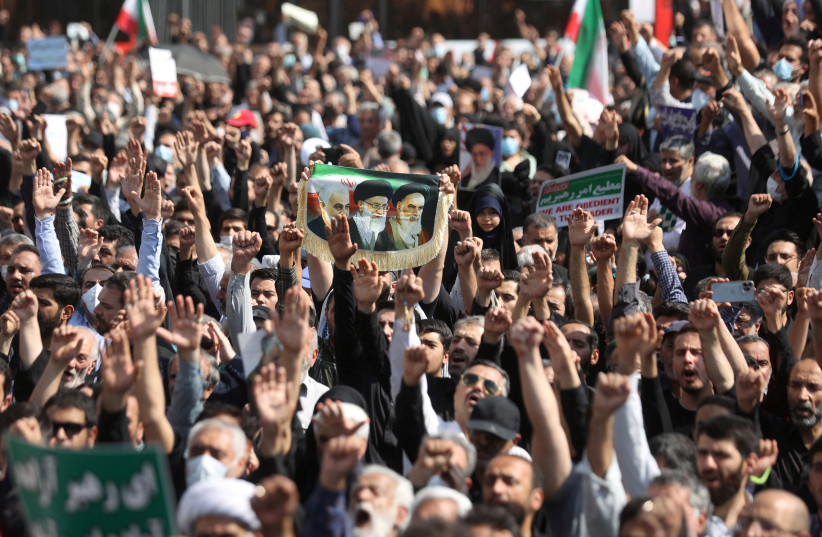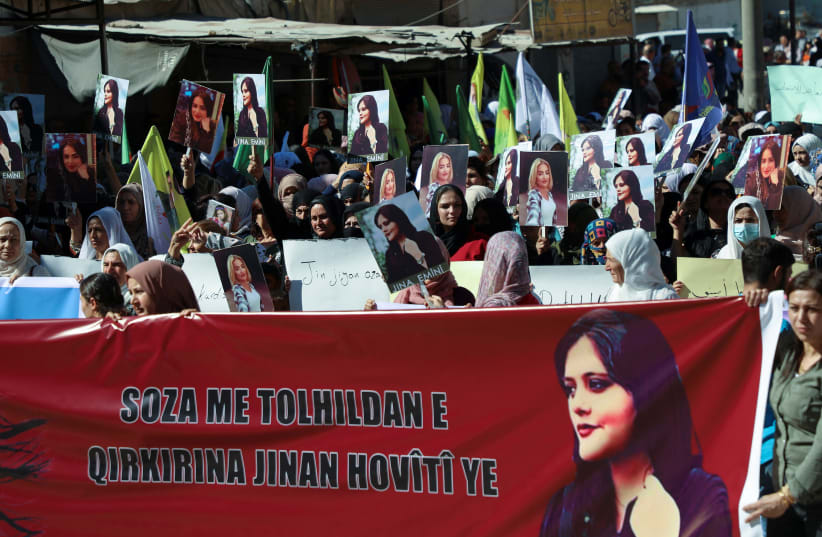Iran has continued to target Kurds in response to protests in Iran. As the protests continued for weeks the regime, decided to try to placate some of the protests at home; while striking out at the Kurdistan region of Iran and the Kurdistan region of Iraq. The Kurdistan region of Iraq is an autonomous region and Iran is seeking to destabilize it and also target Kurdish opposition groups.
Many Kurds from Iran have fled to Iraq over the years and some of them joined opposition groups, such as the PAK, PDKI and PJAK. These groups are opposed to Iran’s regime and they have different ideologies but their overall essence is the same in that they are Kurdish and also oppose the theocratic regime. There are many minority groups in Iran but Kurds have often proven to have a successful track record of resistance.
Iran’s regime fears minorities and seeks to crack down on Kurds. Part of this is because Mahsa Amini, the woman whose death sparked the protests, was Kurdish. Also Kurdish slogans about “women, life, liberty” have become common across Iran as part of the protest.
Iran has used the protests as an excuse now to carry out 12 days of bombardment of Kurdish areas in northern Iraq. This has included the use of ballistic missiles and drones, but it is mostly now confined to artillery strikes. There are also fears of a land incursion from the border region.
On October 5 the PAK group, which is a Kurdish Iranian group that also helped fight ISIS in Iraq for many years; tweeted that Iranian drones attacked the group on Wednesday. Commander of the PAK forces General Hussein Yazdanpana visited wounded members of his group in a hospital this week.


Reports say Iran has bolstered its forces in the Baneh border area. Two days ago those forces reportedly murdered Kurds accused of smuggling. These are informal networks of traders who bring goods over the mountains and they are known as “kolbars” and Iranian forces often shoot at these men. Two were killed, according to reports, on October 3 and others were injured on September 14.
Are the Kurds concerned about Iran?
Kurds are concerned that Iran may launch a ground incursion. It is not clear if it would target areas near the border, or strike at one of the groups, such as Komala which has members near Sulimaniyeh; or PDKI in Koya. According to Kurdistan24 the bombardment today targeted “the Barbzeen countryside and Mount Saqar witnessed fresh rounds of artillery shelling early Wednesday.”
According to Halmat Palani, a Kurdish human rights activist, English teacher, and freelance writer, notes that it is important to remember that Amini was Kurdish. “While the death of Jina Amini was undeniably an example of violence against women in Iran, her ethnic identity was an equally important factor in what led to her murder. Many Kurdish activists believe strongly that she was beaten to death because of her Kurdish identity.”
“While the death of Jina Amini was undeniably an example of violence against women in Iran, her ethnic identity was an equally important factor in what led to her murder. Many Kurdish activists believe strongly that she was beaten to death because of her Kurdish identity.”
Halmat Palani, Kurdish human rights activist, English teacher and freelance writer
He argues that “there is a campaign of cultural genocide against the Kurds in Iran and this campaign took on a new life when the Supreme Leader of the Islamic Regime of Iran, Ayatollah Khomeini, declared a Fatwa against the Kurds back in the 1980s and unleashed a bloody campaign against the Kurdish people of Rojhelat (Iranian Kurdistan).” He notes that while the Iranian constitution guarantees minorities like Kurds, Baloch, Ahwaz Arabs, Azeri Turks and other minorities, cultural rights such as the right to teach and learn in their mother tongue, in practice there is a policy of forced assimilation. “The Kurds in Iran, have been facing cultural genocide for over a century,” he asserted in a recent article.
